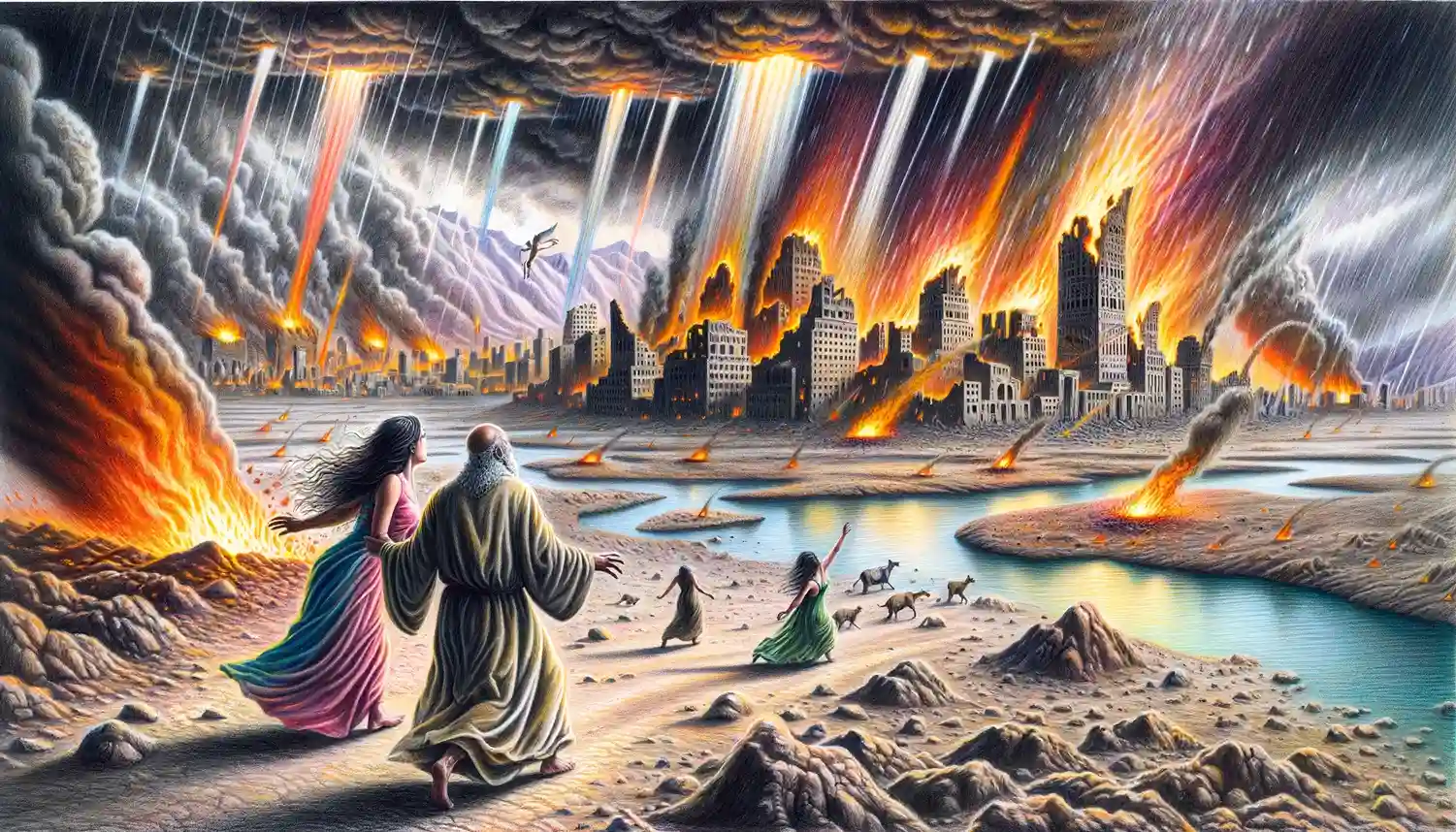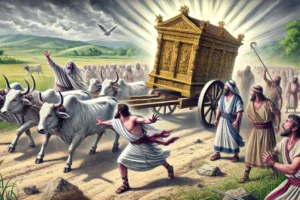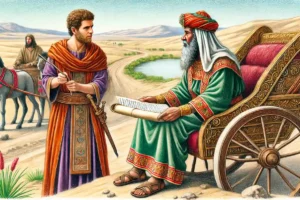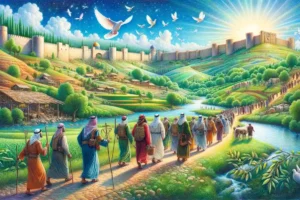
Sodom and Gomorrah Destroyed
The story of Sodom and Gomorrah’s destruction, found in Genesis 19:24-25, is a powerful account of divine judgment and mercy. It highlights the consequences of wickedness and the importance of righteousness.
Short Quick Facts:
- Divine Judgment: God judged Sodom and Gomorrah for their extreme wickedness.
- Angelic Intervention: Two angels visited Lot, warning him to flee with his family.
- Destruction: God rained down sulfur and fire, completely destroying the cities.
- Lot’s Escape: Lot and his daughters fled to safety; his wife looked back and turned into a pillar of salt.
- Significance: This event exemplifies divine judgment against sin in biblical history.
The destruction of Sodom and Gomorrah is a significant event in biblical history, encapsulated in Genesis 19:24-25. This narrative illustrates the severity of divine judgment against sin and the mercy shown to the righteous.
Context and Background:
The story begins in Genesis 18, where God reveals to Abraham that He plans to investigate the outcry against Sodom and Gomorrah. Abraham intercedes on behalf of the cities, concerned for the righteous people who might live there, particularly his nephew Lot. God agrees that if ten righteous people are found, He will spare the cities.
Angelic Intervention:
In Genesis 19, two angels visit Sodom and are met by Lot, who offers them hospitality. The wickedness of the city is immediately evident when the men of Sodom surround Lot’s house, demanding to have relations with the visitors. The angels strike the crowd with blindness to protect Lot and reveal their mission to destroy the city. They urge Lot to gather his family and flee, instructing them not to look back.
The Destruction:
As dawn approaches, Lot, his wife, and two daughters are led out of the city by the angels. Genesis 19:24-25 details the destruction: “Then the Lord rained down burning sulfur on Sodom and Gomorrah—from the Lord out of the heavens. Thus he overthrew those cities and the entire plain, destroying all those living in the cities—and also the vegetation in the land.”
The language emphasizes the totality of the destruction, affecting not just the cities but also the surrounding plains and vegetation. This signifies a complete eradication of the wickedness that pervaded the area.
Lot’s Wife:
Despite the warning, Lot’s wife looks back at the burning cities and is turned into a pillar of salt. This act symbolizes the danger of longing for a sinful past and disobeying divine commands. Her transformation into a pillar of salt serves as a stark reminder of the consequences of defiance and nostalgia for sin.
Theological Insights:
- Divine Judgment and Mercy: The destruction of Sodom and Gomorrah is a clear manifestation of God’s justice. It underscores the severity with which God views sin, particularly sins of a communal nature that cry out for judgment. Yet, within this narrative, there is also a display of God’s mercy, as seen in the rescue of Lot and his family.
- Intercession: Abraham’s intercession for the cities highlights the power and importance of intercessory prayer. It demonstrates that God is willing to listen to the pleas for mercy on behalf of others and underscores the influence of a righteous person’s prayer.
- Righteousness and Wickedness: The story contrasts the lives of the wicked inhabitants of Sodom and Gomorrah with the relative righteousness of Lot. Although Lot is not without flaws, his choice to protect the angels and his initial willingness to follow their commands set him apart.
- Judgment as a Warning: The event serves as a potent warning for future generations. Both Old and New Testament writers refer to Sodom and Gomorrah as symbols of God’s judgment. For example, Jude 1:7 cites them as an example of eternal fire for those who pursue immoral lives.
Archaeological and Historical Implications:
The precise location of Sodom and Gomorrah remains uncertain, but many scholars believe they were located near the Dead Sea, where some suggest the high salt content and natural bitumen deposits could have contributed to the fire and brimstone imagery. The story has intrigued archaeologists and theologians, inspiring numerous excavations and studies to uncover the historical basis for the biblical account.
Conclusion:
The destruction of Sodom and Gomorrah is more than a tale of divine wrath; it is a narrative rich with themes of judgment, mercy, righteousness, and the profound impact of human choices. It serves as a timeless reminder of the consequences of sin and the importance of obedience to God’s commands.
Tag:Angels, destruction, divine judgment, fire, Genesis, Gomorrah, Lot, pillar of salt, Sodom, sulfur



